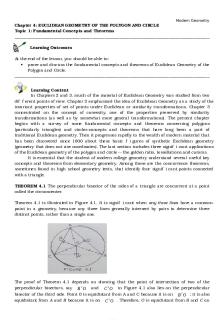Module 5 Topic 1 PDF

| Title | Module 5 Topic 1 |
|---|---|
| Author | Anna Collins |
| Course | Health Policy/Social Issues |
| Institution | University of North Alabama |
| Pages | 2 |
| File Size | 59.2 KB |
| File Type | |
| Total Downloads | 108 |
| Total Views | 184 |
Summary
Discussion Board 5 Topic 1...
Description
The Health Workforce Health Policy & Social Issues University of North Alabama
Changes to scope-of-practice regulations are rules under. Many of the regulations and rules in place are frustrating for medical workers today. The process of change towards the practice might inspire the healthcare systems to work hard towards at achieving employee shortage problems. However, healthcare organizations are scared of such changes since they fear the move will lower the appealing rewards for medical professionals who are working in the institutions (Knickman & Kovner, 2015). The facilities also think that the changes would not work since they are working in a new mechanism which makes sure that there is the provision of practical benefits to healthcare workers and institutions. Similarly, the organizations would not be capable of managing high-quality studies and training for healthcare employees since that will require a lot of money to be spent. (Fairman, Rowe, Hassmiller, & Shalala, 2011). Most of them would not advocate for the expenditure due to reduced income level among workers. States need to come forward to take part in the adjustment of the scope-of-practice regulations since they can guarantee assistance to the healthcare institutions through different explored routes. For instance, they can act by permitting experts to get knowledge, experience, skills, and training in the state organized centers to offer the maximum amount of services to the healthcare institutions (Reagan & Salsberry, 2013). These actions by the individual states are ways of minimizing their cost through training professionals. Such changes on the scope-ofpractice regulations being used to help in alleviating health care employee shortages are not justifiable since most of the healthcare organizations are scared of the impact and consequences of the process. As a result, the scope-of-practice regulations must evolve to make sure that safe and economic health care services are delivered. As there are many advantages to electronic communication and telemedicine solutions within health care, they have their own set of disadvantages as well. A few of those risk include: technology failures and technology dependencies. Since telemedicine solutions are completely technology based, probability of facing a technology failure is higher. Overall, technology automates many processes that are in place. When they fail, it becomes challenging for users to adapt to backup situations. Also, there is only so much a physical can diagnose without properly assessing a patient. Not physically laying eyes and hands on a patient can leave room for many medical errors to be made. Also, telemedicine will require a lot of IT training to ensure the physicians can properly use the programs (McLean, Sheikh, Cresswell, Nurmatov, Mukherjee, Hemmi, & Pagliari).
References:
Fairman, J. A., Rowe, J. W., Hassmiller, S., & Shalala, D. E. (2011). Broadening the scope of nursing practice. New England Journal of Medicine, 364(3), 193-196. Knickman, J. R., & Kovner, A. R. (2015). Jonas and Kovner's health care delivery in the United States (11th ed.). New York, NY: Springer Publishing. ISBN-13: 978-0-8261-2527-9. McLean, S., Sheikh, A., Cresswell, K., Nurmatov, U., Mukherjee, M., Hemmi, A., & Pagliari, C. (2013). The impact of telehealthcare on the quality and safety of care: a systematic overview. PloS one, 8(8), e71238. doi:10.1371/journal.pone.0071238 Reagan, P. B., & Salsberry, P. J. (2013). The effects of state-level scope-of-practice regulations on the number and growth of nurse practitioners. Nursing Outlook, 61(6), 392-399....
Similar Free PDFs

Module 5 Topic 1
- 2 Pages

Module 2 Topic 1
- 1 Pages

Module 3 Topic 1
- 1 Pages

Chapter 4 Topic 1 Module
- 6 Pages

Topic 5 DQ 1
- 2 Pages

Topic 5 assignment brochure (1)
- 3 Pages

RAE e-book Module 2 - Topic 1
- 13 Pages

RAE ebook, Module 1, Topic 4
- 20 Pages

Culinary Nutrition Module 1-5
- 26 Pages

1020 Module 5 Session 1
- 13 Pages

Module 5 Option 1-Moneyball
- 7 Pages

GEE2-Module-5 Sogie (1)
- 5 Pages

QUIZ Topic 5 - QUIZ 5
- 2 Pages

5 Maslahah Mursalah - topic 5
- 3 Pages
Popular Institutions
- Tinajero National High School - Annex
- Politeknik Caltex Riau
- Yokohama City University
- SGT University
- University of Al-Qadisiyah
- Divine Word College of Vigan
- Techniek College Rotterdam
- Universidade de Santiago
- Universiti Teknologi MARA Cawangan Johor Kampus Pasir Gudang
- Poltekkes Kemenkes Yogyakarta
- Baguio City National High School
- Colegio san marcos
- preparatoria uno
- Centro de Bachillerato Tecnológico Industrial y de Servicios No. 107
- Dalian Maritime University
- Quang Trung Secondary School
- Colegio Tecnológico en Informática
- Corporación Regional de Educación Superior
- Grupo CEDVA
- Dar Al Uloom University
- Centro de Estudios Preuniversitarios de la Universidad Nacional de Ingeniería
- 上智大学
- Aakash International School, Nuna Majara
- San Felipe Neri Catholic School
- Kang Chiao International School - New Taipei City
- Misamis Occidental National High School
- Institución Educativa Escuela Normal Juan Ladrilleros
- Kolehiyo ng Pantukan
- Batanes State College
- Instituto Continental
- Sekolah Menengah Kejuruan Kesehatan Kaltara (Tarakan)
- Colegio de La Inmaculada Concepcion - Cebu

